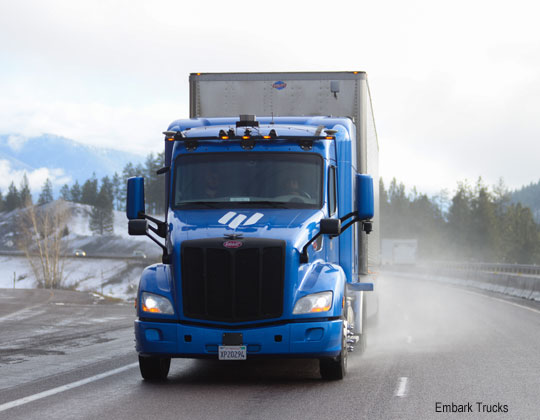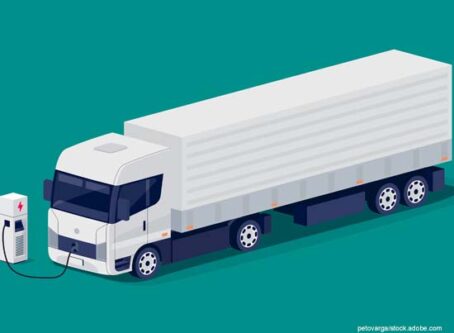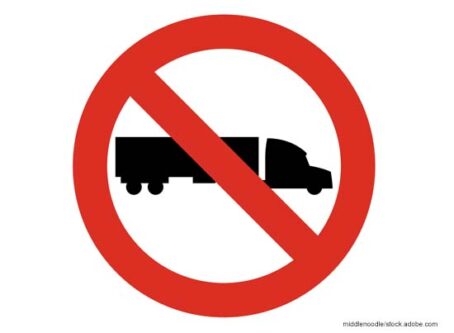Self-driving trucks reach milestone with testing in snowy conditions

Self-driving trucks hit another milestone after Embark Trucks completed testing in snowy conditions. However, testing was not without its flaws.
Embark Trucks claims it has successfully completed on-road testing in Montana during snowy conditions. The San Francisco-based autonomous truck company made the announcement four months after stating it would test self-driving trucks in such conditions.
According to Embark Trucks, 90% of the test runs demonstrated its Vision Map Fusion technology either operated successfully or paused and resumed driving “within acceptable shipper delivery windows.”
The announcement could be big news for the self-driving trucks industry. Until now, nearly all testing of autonomous truck technologies have been conducted in warm-weather locations, including Arizona, California and Texas. In those areas, clear skies allow for testing uninterrupted by inclement weather.
Critics of autonomous vehicle technologies have expressed concerns over the lack of testing during inclement weather, including the U.S. Department of Transportation.
“There are technical and social acceptance obstacles that must be overcome before the full potential of automated vehicles can be realized,” the U.S. DOT states in a report. “Today, most AV applications or technologies are tested in clear weather conditions for safety reasons. AVs must be tested in adverse weather conditions in order to change social perception and thus social acceptance of this technology.”
Although that report was published in December 2016, not much has changed until now.
Embark Trucks’ testing includes a 60-mile round trip on public roads between Clinton and Missoula.
“While we continue to focus on our existing commercialization timeline, the validation of our (Vision Map Fusion) technology for use in northern states and regions that regularly experience seasonal snowy weather will prepare us for long-term deployments and growth, and help us provide the most flexible solution possible for our carrier partners,” Embark Trucks CEO Alex Rodrigues said in statement.
Self-driving trucks still not ready for prime time
Despite Embark Trucks’ milestone achievement, self-driving trucks have a long journey before being commercially available.
Aside from regulatory hurdles, Embark Trucks’ testing in Montana has its limits.
To start, the testing in Montana reveals that self-driving trucks propelled by Embark Trucks’ technology operate safely “in snowfall rates up to one-sixth inch per hour and with snow accumulation of 1 inch on the road over 3 hours.”
Although that eliminates the operation of self-driving trucks in more extreme winter weather conditions, it does account for most winter driving.
In addition to on-road testing, Embark Trucks developed a comprehensive weather model using over 8 billion historical weather data points, according to a news release. Dating back over 10 years on all major U.S. routes, the model analyzes the impact of snow at a lane level across the nation.
According to Embark Trucks’ analysis, conditions under which its trucks operate safely “cover the vast majority of snowy weather.” One in five shipments on northern lanes will experience some snowy conditions, the analysis reveals.
Even though Embark Trucks’ technology can successfully navigate 90% of runs in snowy conditions, that remaining 10% can pose a significant problem for shippers and receivers. LL









